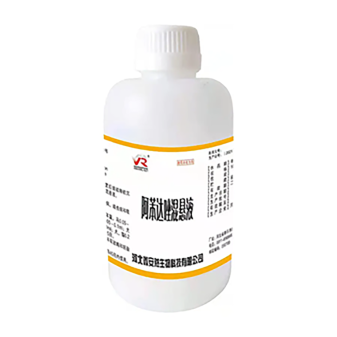- Afrikaans
- Albanian
- Amharic
- Arabic
- Armenian
- Azerbaijani
- Basque
- Belarusian
- Bengali
- Bosnian
- Bulgarian
- Catalan
- Cebuano
- Corsican
- Croatian
- Czech
- Danish
- Dutch
- English
- Esperanto
- Estonian
- Finnish
- French
- Frisian
- Galician
- Georgian
- German
- Greek
- Gujarati
- Haitian Creole
- hausa
- hawaiian
- Hebrew
- Hindi
- Miao
- Hungarian
- Icelandic
- igbo
- Indonesian
- irish
- Italian
- Japanese
- Javanese
- Kannada
- kazakh
- Khmer
- Rwandese
- Korean
- Kurdish
- Kyrgyz
- Lao
- Latin
- Latvian
- Lithuanian
- Luxembourgish
- Macedonian
- Malgashi
- Malay
- Malayalam
- Maltese
- Maori
- Marathi
- Mongolian
- Myanmar
- Nepali
- Norwegian
- Norwegian
- Occitan
- Pashto
- Persian
- Polish
- Portuguese
- Punjabi
- Romanian
- Russian
- Samoan
- Scottish Gaelic
- Serbian
- Sesotho
- Shona
- Sindhi
- Sinhala
- Slovak
- Slovenian
- Somali
- Spanish
- Sundanese
- Swahili
- Swedish
- Tagalog
- Tajik
- Tamil
- Tatar
- Telugu
- Thai
- Turkish
- Turkmen
- Ukrainian
- Urdu
- Uighur
- Uzbek
- Vietnamese
- Welsh
- Bantu
- Yiddish
- Yoruba
- Zulu
Jan . 01, 2025 06:38 Back to list
Efficacy of Paracetamol as an Antipyretic in Reducing Fever Symptoms.
The Role of Paracetamol as an Antipyretic A Comprehensive Overview
Paracetamol, also known as acetaminophen, is a widely used medication that serves as an antipyretic and analgesic. It is commonly employed to alleviate fever and pain, making it a staple in both over-the-counter and prescription medications. Understanding paracetamol's mechanism of action, uses, potential side effects, and precautions can help individuals use this medication more effectively and safely.
Mechanism of Action
Paracetamol acts primarily in the central nervous system. Its antipyretic effect is attributed to its action on the hypothalamic heat-regulating center, where it helps lower elevated body temperature. Unlike nonsteroidal anti-inflammatory drugs (NSAIDs) such as ibuprofen, paracetamol does not possess significant anti-inflammatory properties. It is believed to inhibit the enzyme cyclooxygenase (COX), particularly COX-2, in the brain, leading to a reduction in the synthesis of prostaglandins, which are responsible for inducing fever and signaling pain. Furthermore, paracetamol appears to modulate the endocannabinoid system, contributing to its analgesic effects.
Uses
Paracetamol is primarily indicated for the treatment of mild to moderate pain, such as headaches, toothaches, muscle aches, and osteoarthritis pain. Its antipyretic properties make it particularly valuable for treating fevers associated with infections, such as the common cold or flu. It is frequently recommended for children's fever management due to its relatively mild side effect profile compared to other analgesics. Moreover, paracetamol is often preferred in cases where patients are unable to take NSAIDs, such as those with a history of gastric ulcers or certain cardiovascular conditions.
Dosage and Administration
antipyretic paracetamol

The dosage of paracetamol must be tailored to the age and weight of the individual, as well as the specific nature of the symptoms being treated. For adults, the standard dose is typically 500 to 1000 mg every 4 to 6 hours, with a maximum daily limit of 3000 to 4000 mg, depending on national guidelines. For children, liquid formulations are available, and dosages are often determined based on weight. It is crucial to adhere to recommended dosages to avoid the risk of overdose, which can lead to severe liver damage.
Side Effects and Risks
While paracetamol is generally considered safe for most individuals when taken as directed, it is essential to be aware of potential side effects. Common side effects may include nausea, vomiting, and abdominal pain, although these are relatively rare. The most significant risk associated with paracetamol is liver toxicity, especially in cases of overdose. Consequently, individuals should avoid combining paracetamol with alcohol, as this can further increase the risk of liver injury.
Certain populations, such as those with pre-existing liver disease or those taking other medications that affect liver function, should exercise caution when using paracetamol. It is advisable for these individuals to consult a healthcare provider before use. Additionally, while paracetamol is often considered safe during pregnancy, pregnant women should still seek medical advice before taking any medication.
Conclusion
Paracetamol remains an essential medication in the management of fever and pain due to its efficacy and safety profile. Its widespread availability and use make it a go-to option for many individuals seeking relief from various ailments. However, it is paramount to use paracetamol responsibly, adhering to recommended dosages and considering individual health conditions. By understanding the benefits and limitations of this widely used antipyretic, patients can make informed decisions and consult healthcare professionals when necessary, ensuring safe and effective use of paracetamol in their health management strategies.
-
Guide to Oxytetracycline Injection
NewsMar.27,2025
-
Guide to Colistin Sulphate
NewsMar.27,2025
-
Gentamicin Sulfate: Uses, Price, And Key Information
NewsMar.27,2025
-
Enrofloxacin Injection: Uses, Price, And Supplier Information
NewsMar.27,2025
-
Dexamethasone Sodium Phosphate Injection: Uses, Price, And Key Information
NewsMar.27,2025
-
Albendazole Tablet: Uses, Dosage, Cost, And Key Information
NewsMar.27,2025













